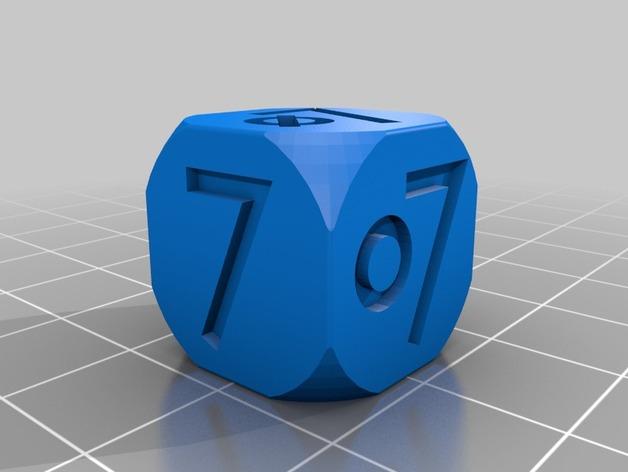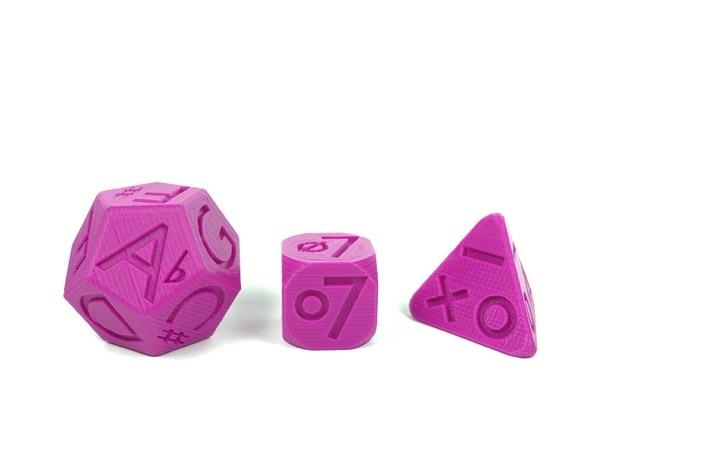We follow many different cases of how incredibly helpful 3D printing can be in education, as well as how integrated it is becoming in classrooms these days due to the STEAM agenda–and the simple fact that teachers are just plain interested in the technology and work hard to give their students access to it. Outside of the classroom though, many other educational opportunities abound, as well as offering extremely creative venues that work well with digital design and 3D printing.
While we’ve followed numerous 3D printing innovations regarding music, from 3D printed guitars to Amy Winehouse figurines to collections of 3D printed stringed instruments, nothing compares to the educational value and convenience afforded by this latest device, created by Michael New–quite the innovative music teacher–who isn’t leaving learning to luck. As an instructor of music theory, New spends his time thinking up ways to show his students how to practice different chords, chord progressions, and scales–and considering different methods to make it all stick.
Inspired by a comment on his YouTube channel, New decided to try his hand at 3D printing a device that helps his students practice more efficiently in playing chords and progressions rather than training with rote methods.
“The way you really want to practice is randomly,” New told 3DPrint.com.
“Ideally you just play in random different keys and that way there is no pattern about how you are moving chords from one to the next and it kind of forces you to really learn that progression versus learning how to move it over,” said New.
With a new hobby in exploring 3D printing, which New says has developed into a full-fledged obsession, he decided to work on making a 3D printed die which the student can roll and see which random key to play in next. Not only is it a fun and unique way to practice, but it forces the student to play in a more challenging manner, rather than reverting back to what they are comfortable with.
“I also thought it would be great to have a way to practice different chord qualities, so I created the four-sided die for practicing basic chords and the six-sided dice for practicing different kinds of seventh chords. One of the reasons why I think they’re great for practicing with is that they’re so tactile,” New told 3DPrint.com. “There’s this interesting study put out by a Norwegian university where they found that people who read physical books are able to remember what they read far better than people who read eBooks. And I think that applies here as well; the physical nature of the dice makes practicing a bit more engaging and memorable.”
Printed colorfully (with purple as an example), New put his 3D printing talents to work for his students, designing the pieces in Blender and then printing them on his desktop. The D12 print offers varying musical keys on each side, while the D4 has different chords.
“The D6 has different seventh chord qualities–major, minor, dominant, diminished, half diminished, and major-minor,” says New. “So if you’re practicing seventh chords, for example, you’d roll the D12 and the D6 and then play F#7–assuming that’s what came up. The D12 is also useful by itself for practicing a chord progression in different keys or just as a creative tool for generating ideas.”
Even better, New has made the 3D files available so that his students can download the files and 3D print them also. He also gives out the 3D printed dice as ‘rewards’ to his student musicians.
If you are interested in downloading and 3D printing them for yourself, they are now available on Thingiverse as well. New recommends starting with the D4 if you are looking for an easier project, as all their faces are angled upward.
“The D12 is the hardest (faces are overhanging), and the D6 is about in the middle (faces are vertical). The D12 has a couple integrated supports, but you shouldn’t need to turn supports on for any of them,” says New. “I also recommend a good print cooling fan, otherwise the lettering will sag and just look crappy in general.”
Infill is up to the user, as long as it is not set at zero, advises New. The more infill you use will result in heavier dice. For a fairly light but easy to use product, New set infill at twenty percent.
With all the facets involved in using the 3D printed dice for practice, New thinks it makes the process all that more memorable, and is quite convinced that his students learn better this way due to all the sensory aspects, from touching them to rolling the dice and hearing them fall–along with, of course–actually playing.
Subscribe to Our Email Newsletter
Stay up-to-date on all the latest news from the 3D printing industry and receive information and offers from third party vendors.
Print Services
Upload your 3D Models and get them printed quickly and efficiently.
You May Also Like
Heating Up: 3D Systems’ Scott Green Discusses 3D Printing’s Potential in the Data Center Industry
The relentless rise of NVIDIA, the steadily increasing pledges of major private and public investments in national infrastructure projects around the world, and the general cultural obsession with AI have...
Formlabs Teams Up with DMG MORI in Japan
In late June, Nick Graham, Chief Revenue Officer at Formlabs, announced on LinkedIn that the company had partnered with DMG MORI, one of the world’s leading machine tool companies, to...
EOS in India: AM’s Rising Star
EOS is doubling down on India. With a growing base of aerospace startups, new government policies, and a massive engineering workforce, India is quickly becoming one of the most important...
3D Printing News Briefs, June 25, 2025: R&D Materials, 3D Printed Veneers, & More
In today’s 3D Printing News Briefs, 3DXTECH has launched a program that gives customers early access to experimental materials, and the first Lithoz CeraFab Multi 2M30 in the Czech Republic...





































